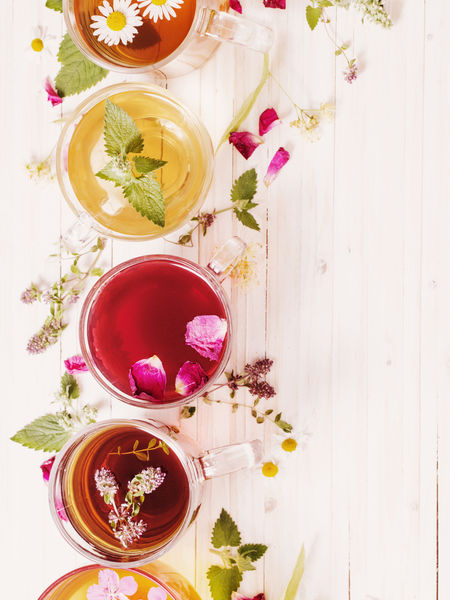Guide to Getting the Most Caffeine from Tea


Hello folks!
Now, a little while ago I wrote an article on The Truth About Tea and Caffeine. In it, I explained how much caffeine is present in the tea leaf— yup, we’re still talking Camellia Sinensis here, none of that fancy herb stuff until later articles— works in the brewing process of tea. Because I am well aware that time and brainpower are precious, I won’t make it a requirement that you have to explicitly go back to the previous article and read it if you haven’t yet had the chance, but I will recommend it!
(Also, I’m well aware that some folks reading this may be part of the back-at-school crowd, who may be in serious need of caffeine but not in serious need of extra homework. I feel you! I’ve been there. And I respect the heck out of what you’re going through.)
So, back to how to figure out caffeine in your cup.
In the previous article I mentioned that C. Sinensis is roughly 4% caffeine, which is fabulous, but how do we use that knowledge when we don’t have a degree in biochemistry?
Luckily, you don’t need a degree in biochem to follow the guide I’m going to lay out for you here in this article. The goal here is to make life easy and simple for all of us, without overcomplicating it with memes and polyphenols.
Here I’m going to go through each type of tea and tell you how to treat it for varying amounts of caffeine, with recommendations to try as you put this knowledge to use in your own life. Sound good? Excellent.
Black Tea
Water: Boiling (212 degrees Fahrenheit or 100 degrees Celsius) is always fine. Lower temperatures will still get you flavor, but less caffeine, though the plus side of low temp steeping is that you can resteep longer and with more repetitions.
Time: 2 to 5 minutes. 2 minutes will be milder, and 5 minutes will be strong. Beyond 5 minutes, you’re just asking for a bitter, caffeinated kick in the ribs. Note though, assuming most of the caffeine came out in those first 5 minutes, that means you’ll be drawing out less caffeine per minute the longer you go.
Recommended: Anhui Keemun. If you’ve never had a Keemun, it is such a great and friendly entry point into the classic Chinese teas that I can’t say enough good things about it. Adagio’s is an excellent paradigm of malt and raisins— and I love how one of the reviewers calls it “an old library” in the best way possible.
Green Tea
Water: Boiling is death. This is great if you want crazy amounts of caffeine, because you’re essentially burning the leaves to get at what is naturally made available in the oxidation process for black tea. Caffeine also gives boiled tea a bitter flavor. Lower temperatures, however, are the traditional sweet spot. Try 155-175 degrees Fahrenheit or 68-80 degrees Celsius to get at the real sweetness of greens.
Time: 1 to 2 minutes if you want a sweet cup — again, with less caffeine— or up to 5 if you want that strong rib-kick and just want to stay awake.
Recommended: Zhejiang Lung Ching. You can’t get into greens without doing a fine Dragonwell like this one. It exemplifies all those nuances in the preparation that I outlined above, so you can wake the dragon without fear.
Oolong Tea
Water: This is where things get funny. If it’s a roastier Oolong, then higher temperatures in the Black tea range will be fine. If it’s a greener, flowery-er variety, then use your green thermometer. (If you don’t have a thermometer, I highly recommend one of Adagio’s variable temperature kettles to take the guesswork out of the equation! Try the new and improved utiliTEA or the sleek variTEA.)
Time: 2 to 5 minutes, using everything you learned from the above two teas to experiment.
Recommended: Milk Oolong. This tea is a cult classic in sip circles. It’s like the Legally Blonde of tea— even if you’ve never watched the whole thing or seen the musical twice without regrets, you still know how to rock the Bend and Snap.
White Tea
Water: Have you ever played the “How Low Can You Go” game? Well, now you start. 155 degrees Fahrenheit is a safe place to set your temperature at, and play with going higher or lower to get some really sweet experiences. (If you just want a killer caffeine kick and don’t care about taste, then pucker up and hit the boil button, being warned that boiled white tea is super dry and bitter to a fault.)
Time: 2 to 3 minutes for the nice cup, and as long as you can stand it for the caffeinated monster. Honestly, if you’re going to go that far and do that to your tea, then you might as well grind it first so that it goes down faster.
Recommended: White Pear. I like this one because it’s just cute. Unassuming, easy to forgive and prepare, and not overpoweringly floral or fruitacious.
Pu Erh Tea
What are you still here for? Don’t you have some tea to drink? Follow the Black tea rules above and give Pu Erh Hazelberry a shot, and go enjoy yourself.
Cheers!
Natasha Nesic
NASM Certified Personal Trainer and Nutrition Coach, Founder of Work Life Fitness and author of The Miracle on 98th Street, available on Amazon.
